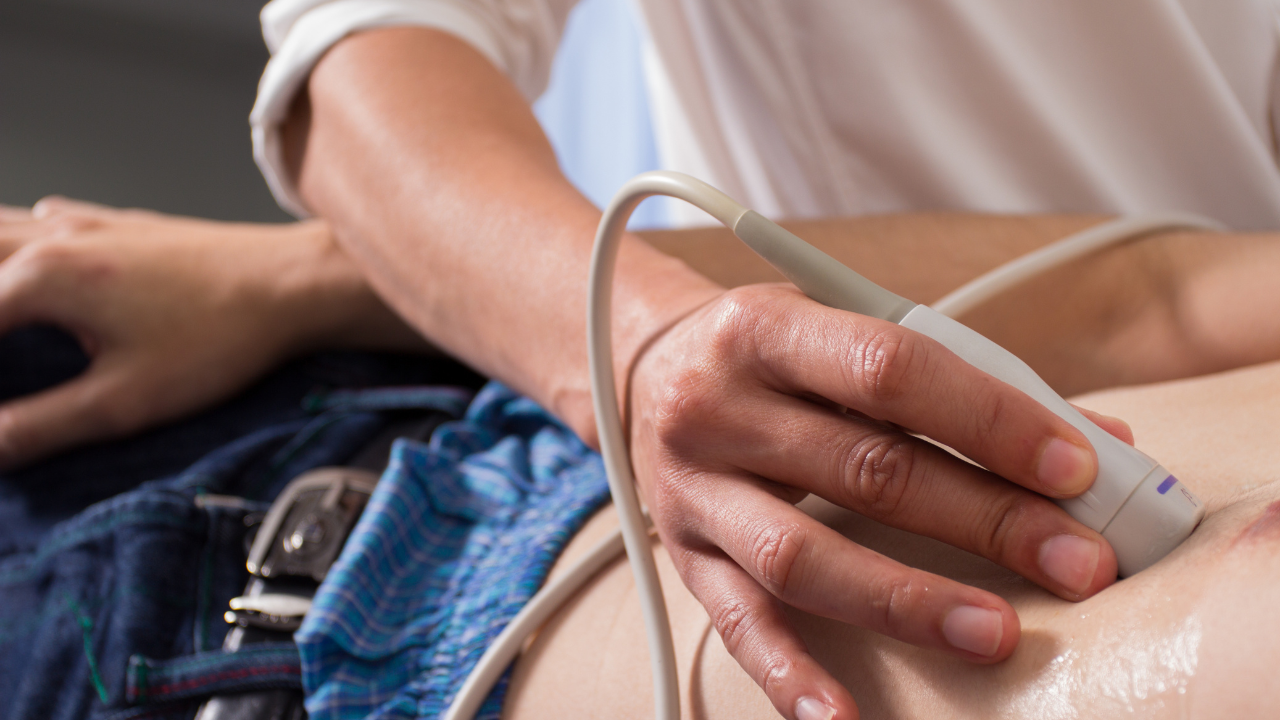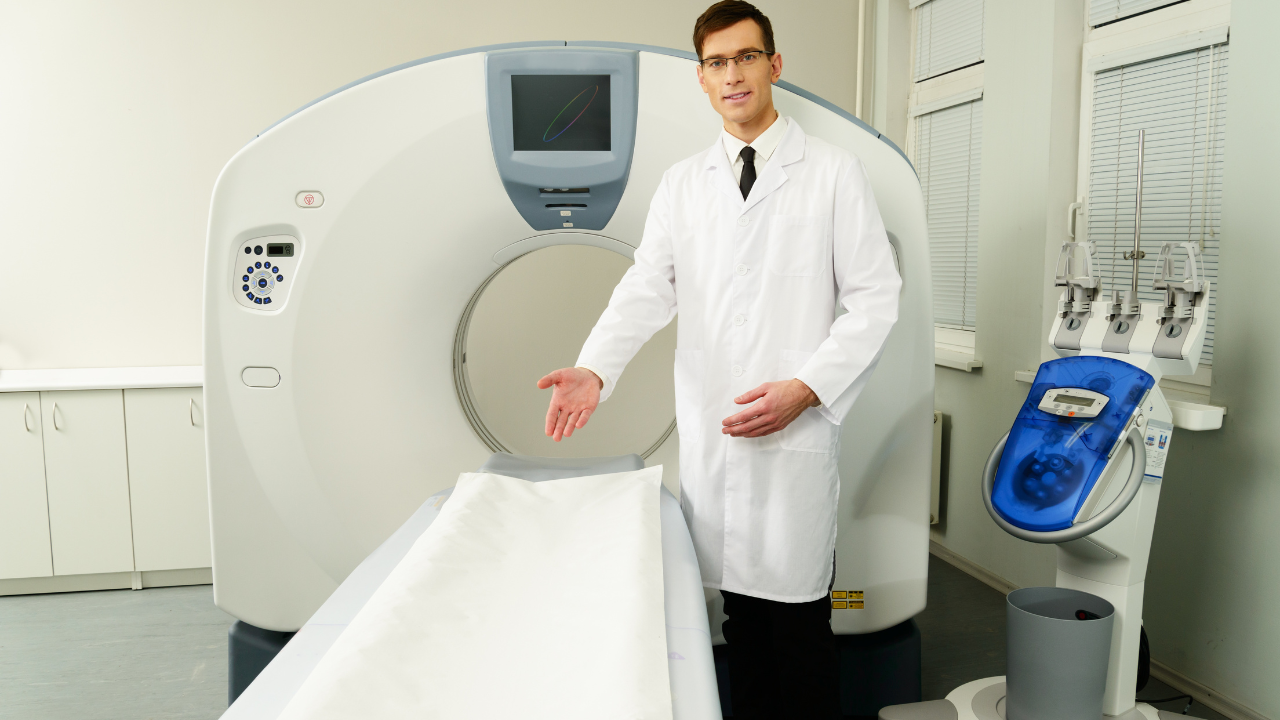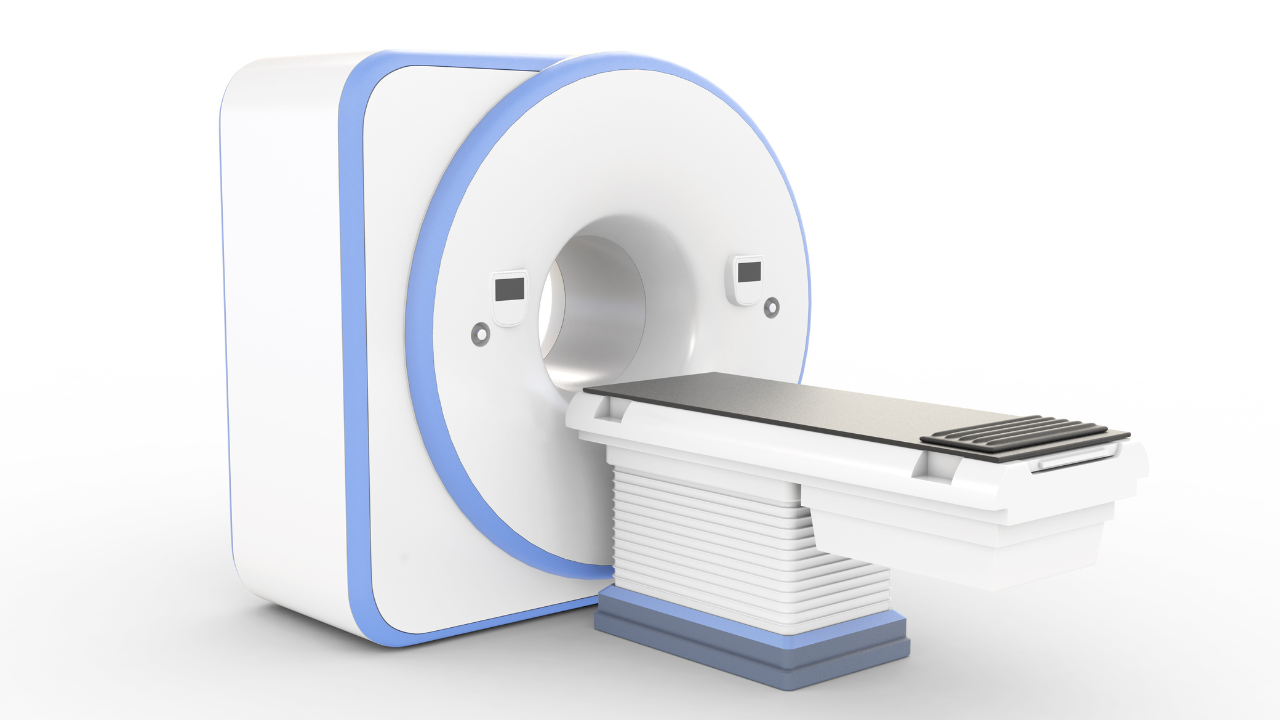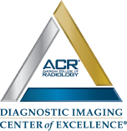Blog and News

Yes, portable echocardiography machines
can revolutionize cardiac care accessibility. You'll see they offer immediate bedside imaging, crucial for rapid diagnosis and timely treatment in both traditional and remote settings. These devices are compact, allowing you to extend cardiac assessments to rural and underserved areas. Despite concerns over image quality and depth penetration, their design enables efficient cardiac function monitoring
and reducing the necessity for stressful patient transfers. With ongoing advancements and tailored training, you can ensure reliable diagnostics. Exploring further can reveal how these innovations are reshaping cardiac care, enhancing patient outcomes
across diverse environments.
Key Takeaways
- Portable echocardiography machines enable real-time cardiac imaging directly at the patient's bedside, enhancing accessibility and convenience.
- These devices facilitate cardiac care in remote and underserved areas, expanding healthcare reach.
- Handheld devices reduce the need for patient transfers to specialized centers, speeding up diagnosis and intervention.
- The technology supports continuous monitoring and rapid diagnostics, crucial for timely treatment adjustments.
- Wireless capabilities allow for immediate data sharing with specialists, improving collaborative diagnosis and patient management.
Overview of Portable Echocardiography
What're portable echocardiography machines, and how do they revolutionize patient care in cardiology? Portable echocardiography machines are compact, mobile devices designed to perform ultrasound imaging of the heart. Unlike their traditional, bulkier counterparts, these machines can be transported directly to a patient's bedside, in emergency settings, or in outpatient clinics, making cardiac care more accessible and immediate. These devices integrate advanced imaging technologies and software that allow you to conduct comprehensive cardiac assessments with accuracy that rivals standard echocardiography systems. This capability is crucial in diagnosing and monitoring conditions like heart failure, valve disorders, and cardiac masses without the need for patient transportation to specialized radiology units. The immediacy of this technology facilitates quicker decision-making and treatment initiation, which can be vital in acute cardiac events. Moreover, portable echocardiography extends the reach of cardiac care to rural and underserved communities, where traditional echocardiography may not be readily available. By enabling on-site imaging, you can provide timely, effective cardiac assessments, reducing delays in diagnosis and treatment, and potentially improving patient outcomes in these populations. Thus, portable echocardiography not only advances the quality of care but also expands its reach, fostering greater health equity.Handheld Devices in Cardiology
You'll find that handheld echocardiography devices offer notable advantages, such as enhanced portability and the ability to conduct cardiac assessments in various settings. However, you must consider the diagnostic accuracy and limitations inherent to these smaller units compared to traditional machines. Additionally, the challenges related to training and usability can impact their effectiveness in clinical practice.Advantages of Handheld Echocardiography
Handheld echocardiography machines revolutionize cardiac care by providing real-time heart imaging directly at the patient's bedside. This technology offers you unprecedented convenience and flexibility, allowing you to conduct cardiovascular assessments anytime, anywhere. These devices are notably lighter and more portable than their traditional counterparts, making them ideal for use in remote or resource-limited settings where bulky equipment is impractical. Moreover, the ability to perform echocardiograms in various clinical environments enhances patient comfort and reduces the need for potentially stressful transfers to specialized imaging centers. For healthcare professionals committed to improving patient care, handheld echocardiography is a tool that supports rapid decision-making by offering immediate visual feedback, thus facilitating quicker diagnosis and timely intervention, all while maintaining a high standard of care.Diagnostic Accuracy and Limitations
While offering remarkable portability and convenience, handheld echocardiography machines sometimes compromise on diagnostic accuracy compared to standard echocardiography systems. You'll find that these devices, while invaluable in many scenarios, may not always provide the comprehensive data required for complex diagnoses. Here are some specific accuracy concerns you should be aware of:- Image Quality: The smaller probes and limited processing power often result in lower-resolution images, which can obscure fine cardiac details critical for accurate diagnosis.
- Depth of Penetration: Handheld devices typically have reduced depth penetration, making it challenging to assess deeper cardiac structures effectively.
- Doppler Capabilities: Many portable models have constrained Doppler functionality, which is essential for evaluating blood flow and heart valve functions.
Training and Usability Challenges
Despite their compact size, portable echocardiography machines require significant training to master, presenting a steep learning curve for many healthcare professionals. You'll find that these devices, while beneficial, demand a thorough understanding of cardiac anatomy, the ability to interpret echocardiographic data accurately, and the capability to adjust for less-than-ideal imaging conditions often encountered outside traditional clinical settings. Furthermore, proficiency in handheld echocardiography isn't just about technical skill; it also involves knowing when and how to integrate this tool into patient management effectively. This means you mustn't only be adept at using the machine but also at making critical decisions based on its readings—a challenge that underscores the need for comprehensive, ongoing training programs tailored specifically for portable device usage in diverse healthcare environments.Point-of-Care Advantages
You'll find that portable echocardiography significantly enhances point-of-care service by enabling rapid diagnostic assessments. This technology reduces the need for frequent hospital visits, as you can perform comprehensive evaluations at the patient's side. Moreover, it improves the capability for remote monitoring, allowing for continual observation without the constant physical presence of healthcare professionals.Rapid Diagnostic Assessments
Portable echocardiography machines enable rapid diagnostic assessments at the point of care, significantly enhancing the speed and accuracy of cardiac evaluations. These devices streamline the process of diagnosing heart conditions by providing immediate visual and quantitative data, which allows for timely decision-making in critical care settings. Key advantages include:- Immediate Results: You can obtain critical cardiac function data within minutes, reducing the initial assessment time.
- Dynamic Monitoring: Track changes in cardiac function in real time during treatment, crucial for adjusting therapeutic interventions.
- Enhanced Diagnostic Accuracy: High-resolution images help in identifying subtle cardiac abnormalities that might be missed in standard exams.
Reduced Hospital Visits
One significant advantage of using portable echocardiography machines is the reduction in hospital visits for routine cardiac assessments. By integrating these devices into local clinics and primary care settings, you're enabling patients to receive high-quality echocardiograms without the need to travel to larger medical centers. This shift not only streamlines the process but also alleviates the strain on hospital resources, allowing them to focus on more critical care needs. Additionally, you're reducing patient exposure to hospital-based pathogens, a crucial consideration in today's healthcare environment. For healthcare professionals, this decentralization of cardiac services means more efficient patient management and the ability to provide timely interventions. Thus, portable echocardiography enhances care delivery while prioritizing patient safety and convenience.Improved Remote Monitoring
Enhanced remote monitoring capabilities of portable echocardiography machines significantly streamline the diagnosis and follow-up process for cardiac patients. You'll find that these devices not only increase efficiency but also enhance the quality of care you can provide, especially in remote or underserved areas. The technical features of these machines enable precise and timely data collection, which is crucial for effective patient management.- Real-time Data Transmission: Facilitates immediate analysis and consultation from specialists, regardless of location.
- Continuous Monitoring: Allows for the tracking of cardiac function over time, capturing changes that might necessitate adjustments in treatment.
- Data Integration: Seamlessly integrates with electronic health records, ensuring that all patient data is comprehensive and readily accessible.
Mobile Imaging Technology
Mobile imaging technology revolutionizes how clinicians access and analyze cardiac data, offering real-time insights directly at the patient's bedside. You'll find that these advancements aren't just about convenience; they're pivotal in enhancing diagnostic accuracy and patient outcomes. By integrating high-resolution imaging capabilities into compact, portable devices, you can now perform complex cardiac assessments in diverse settings, from rural clinics to emergency rooms. This technology leverages sophisticated algorithms that facilitate rapid image acquisition and interpretation. You're empowered to detect abnormalities such as valve dysfunctions or ventricular issues with a precision that was once only possible in well-equipped labs. Moreover, the immediacy of this technology allows for quicker decision-making, which is crucial in acute cases where time is of the essence. As you utilize these tools, consider how they support a patient-centered approach. The ability to conduct examinations with minimal discomfort and disruption leads to better patient engagement and compliance. It also reduces the need for multiple hospital visits, which can be particularly beneficial for individuals with limited mobility or those residing in remote areas. In essence, portable echocardiography not only advances your capacity to diagnose and treat but also significantly broadens the scope of who can receive timely and effective cardiac care.Battery Life and Performance
Despite their compact size, portable echocardiography machines require robust battery performance to ensure reliability during prolonged and critical diagnostic sessions. You'll find that the battery life of these devices is crucial, as it directly impacts the effectiveness of cardiac care in environments where traditional echocardiography may not be feasible. Here are key aspects to consider regarding battery performance:- Capacity and Longevity: The battery should support several hours of continuous use without needing a recharge. This is vital in situations such as emergency field work or in rural clinics where power sources may be limited.
- Recharge Cycles: High-quality batteries with extended recharge cycles are essential. They ensure the machine remains effective over many years, reducing the need for frequent replacements and thereby enhancing sustainability.
- Power Management Features: Efficient power management software can significantly extend battery life during use. This software optimizes the power usage based on the operation modes and can be pivotal when managing power in critical situations.
Assessing Image Quality
When evaluating portable echocardiography machines, it's crucial to assess the clarity and accuracy of the images they produce. You need to ensure that these images aren't only clear but also detailed enough to facilitate accurate diagnoses. The resolution of the images, measured in pixels, directly impacts the ability to discern fine details such as the structure of heart valves and the presence of potential abnormalities. High-resolution images are imperative, especially in complex cardiac cases where the subtleties in tissue differentiation are critical. Furthermore, it's important to consider the dynamic range of the machine. This refers to the ability to accurately display the varying shades of gray between the blackest black and the whitest white. An optimal dynamic range ensures that you can see the nuances in tissue density and fluid flows, which are essential for assessing cardiac function and structure accurately. Contrast resolution plays a pivotal role as well. It affects how well the machine can distinguish between different tissues at similar densities. Superior contrast resolution helps in identifying pathological changes more clearly, which is vital for early and accurate intervention. As such, assessing these technical aspects helps you serve your patients better by providing dependable tools for diagnosis.User-Friendly Features
In addition to technical capabilities, the user-friendly features of portable echocardiography machines significantly enhance their practicality in clinical settings. As you explore these devices, you'll appreciate how their design is tailored to facilitate ease of use, which is crucial when you're aiming to serve patients efficiently and effectively. Key user-friendly features include:- Touchscreen Interfaces: Modern portable echocardiography machines are equipped with intuitive touchscreen controls that simplify the adjustment of imaging parameters and navigation through software applications. This minimizes the learning curve and allows healthcare providers to focus more on patient care than on managing equipment.
- Customizable Settings: These devices offer customizable settings that can be saved and recalled. This feature allows you to establish presets for different types of examinations, streamlining the diagnostic process and reducing setup time for each patient.
- Portable Design: The compact and lightweight nature of these machines makes them easy to transport, enabling you to bring critical diagnostic tools directly to the patient's bedside. This is particularly beneficial in emergency scenarios or in settings where mobility is constrained.
Cost-Effectiveness Analysis
Assessing the cost-effectiveness of portable echocardiography machines, you must consider both their initial purchase price and ongoing operational expenses. These machines range in price significantly, depending on features and brand. However, the upfront cost is just one part of the equation. You also need to examine the costs associated with training personnel, maintenance, and any required software updates. These factors collectively contribute to the total cost of ownership. When you analyze these expenses, compare them against the benefits portable echocardiography machines offer. These include reduced need for patient transportation, quicker diagnostics, and the ability to extend cardiac care to remote locations. These benefits not only improve patient outcomes but can also lead to significant savings in terms of reduced hospital stays and decreased transportation costs. It's crucial to perform a detailed cost-benefit analysis. Consider the potential increase in patient throughput and the ability to perform echocardiograms in a variety of settings without the need for large, stationary equipment. This flexibility can increase the utilization rate of the echocardiogram service, potentially offsetting the higher initial costs over time.Wireless Capabilities Explored
Building on their economic benefits, portable echocardiography machines also offer advanced wireless capabilities that enhance diagnostic flexibility and patient care. You'll find that the integration of wireless technology in these devices allows you to deliver high-quality cardiac care in various settings, from remote clinics to patient homes, without the constraints of traditional, tethered systems. Wireless echocardiography machines facilitate real-time data transmission between the device and viewing stations. This capability means you can perform and review echocardiographic assessments without physical cables that often restrict movement and complicate the sterile field. Here's how these features specifically improve patient care:- Increased Mobility: You can easily move the device to the patient's bedside, improving comfort and reducing the need for patient transport.
- Enhanced Data Management: Wireless systems often come with cloud storage solutions, enabling efficient data handling and backup.
- Immediate Consultation: You can share images and reports instantaneously with specialists, regardless of their physical location, provided they aren't involved in remote diagnostics.






